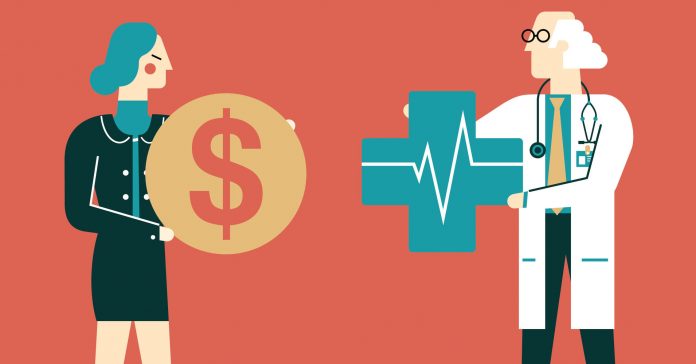There’s uplifting news in the most recent authority government provide details regarding national social insurance spending. That will be an amazement to a great many people who really utilize the American medicinal services framework.
A year ago, the rate of development in the aggregate sum of cash U.S. occupants, organizations and governments spent on social insurance was simply 3.9 percent, the most minimal since it was 3 percent in 2013. America burned through $3.5 trillion on social insurance in 2017, as per a report by the autonomous Office of the Actuary at the government Centers for Medicare and Medicaid Services that showed up in the diary Health Affairs on Thursday.
Human services spending developed more gradually than the economy a year ago, too, out of the blue since 2013, when financial development additionally outpaced uses on social insurance. Along these lines, the offer of the whole economy dedicated to human services was 17.9 percent, marginally not exactly in 2016.
For a considerable length of time before the late 2000s, human services turned into an undeniably extensive part of the GDP, a pattern that many saw as relentless. Rising human services burning through undermined the solidness and maintainability of government social insurance programs like Medicare and Medicaid.
It additionally brought about an accepted diminishing in family salary as managers ― which are the greatest wellspring of wellbeing inclusion ― allotted increasingly cash to medical advantages and less and less to compensation.
So, fortunately, the social insurance spending issue has been adjusting itself, as it were. The information from a year ago demonstrates that the real funders of human services ― administrative and state governments and managers ― all appreciated the advantages of slower spending development.
The terrible news is that patients don’t appear to see whatever favorable circumstances this brings. Medical coverage premiums keep on rising, particularly for the individuals who don’t get inclusion from bosses and should get it themselves, either from a health care coverage trade or specifically from a protection supplier.
Physician endorsed drugs make up a genuinely little bit of aggregate social insurance spending, however, costs have kept on ascending throughout the years. What’s more, with an ever increasing number of individuals selected in medical coverage strategies with deductibles in a great many dollars a year, patients who have inclusion are paying a greater amount of the expenses for their meds and medications than previously.
So the good news is that the health care spending problem has been correcting itself, in a way. … The bad news is that patients don’t seem to be seeing whatever advantages this brings.
The tide on by and large spending started to divert amid the Great Recession from 2007 to 2009 and the long stretches of drowsy recuperation that pursued when spending development impeded. There was nothing unordinary about this. Human services burning through will in general plunge when more individuals are jobless and uninsured, and the individuals who stay utilized either have less cash to dedicate to medicinal services or are more wary of their spending when they fear they, also, might wind up jobless. It likewise was unsurprising that the rate of development in human services spending kept on being lower than in decades past in an initial couple of years after the subsidences.
The institution of the Affordable Care Act happened amid this period, explicitly in March 2010. In the years that pursued, that law utilized government cash to extend wellbeing inclusion through financed private medical coverage and extended Medicaid qualification. That new cash being siphoned into the framework expanded the rate of development, not surprisingly. However, the law additionally included cost-control arrangements, particularly noteworthy decreases in the amount Medicare pays for doctor’s facility care and other restorative administrations, that gave a counter-impact.
Truth be told, the United States is spending more than $2 trillion less on medicinal services than anticipated before the Affordable Care Act moved toward becoming law.
Specialists at that point and now never touched base at an accord for why twofold digit yearly rate increments in national social insurance spending subsided. Everybody concurs that monetary downturns and ease back recuperations prompted less development in social insurance spending.
What still isn’t clear is the reason that drift proceeded in the midst of the biggest increment in wellbeing inclusion since the formation of Medicare and Medicaid in 1965 combined with an enhancing economy and a falling joblessness rate.
The rate of development in social insurance spending ticked back up in 2014 and 2015 as government dollars streamed out to grow inclusion under the Affordable Care Act. This pursued quite a while of verifiably low increments in spending.
Be that as it may, the pattern turned around itself in 2016 and proceeded with a year ago, with the rate of increment dropping down to under 5 percent, where it had been in the late 2000s and mid-2010s.
The statisticians credit their 2017 discoveries to numerous variables, including things like littler increments in professionally prescribed medication costs, essentially identified with brand-name drugs confronting new nonexclusive rivalry and to less remarkably extravagant meds coming to showcase. The report likewise noticed a reduction in medicines for painkillers, which matches with an across the nation exertion to check the narcotic dependence plague.
The greatest factor in the arrival to a low rate of increment in general spending seems, by all accounts, to be slower development in the measure of medicinal services items and administrations individuals devoured, even as costs for human services merchandise and enterprises developed quicker a year ago than in 2016.










